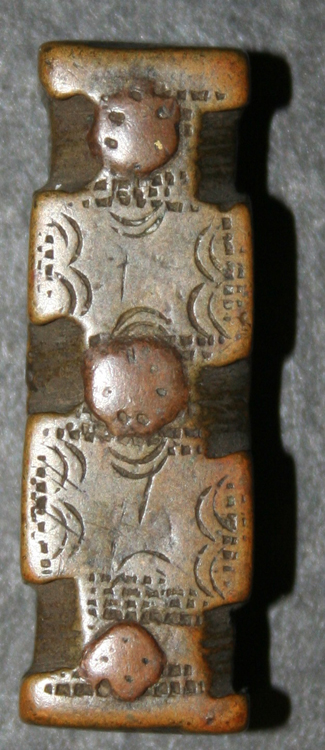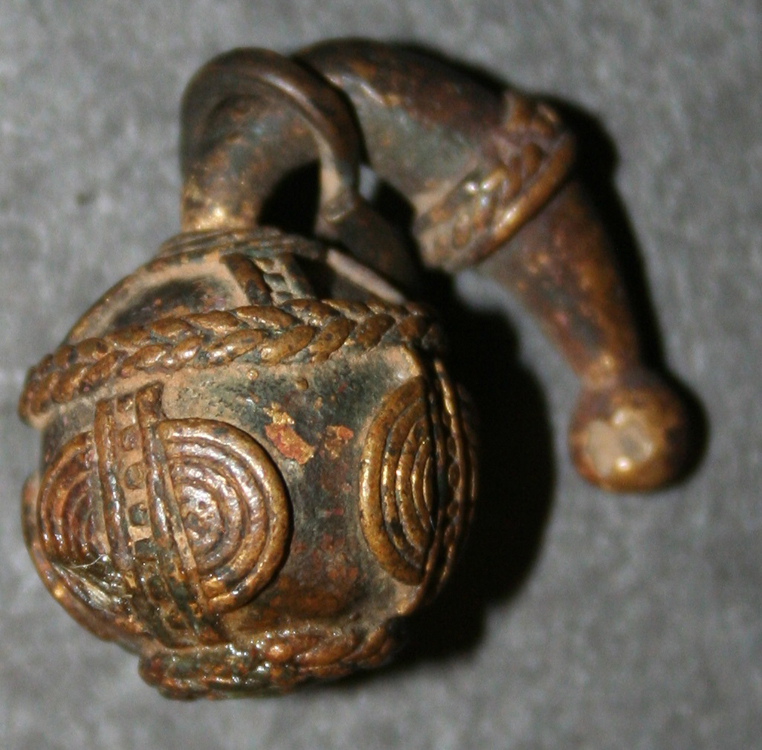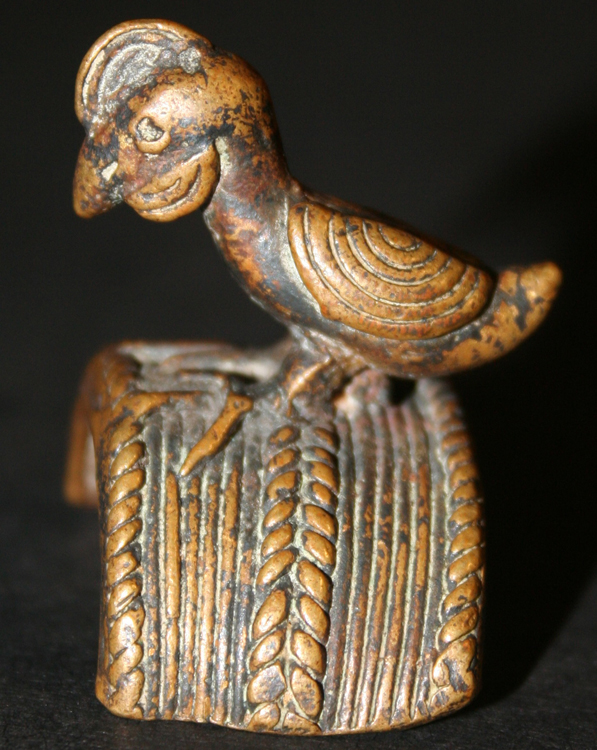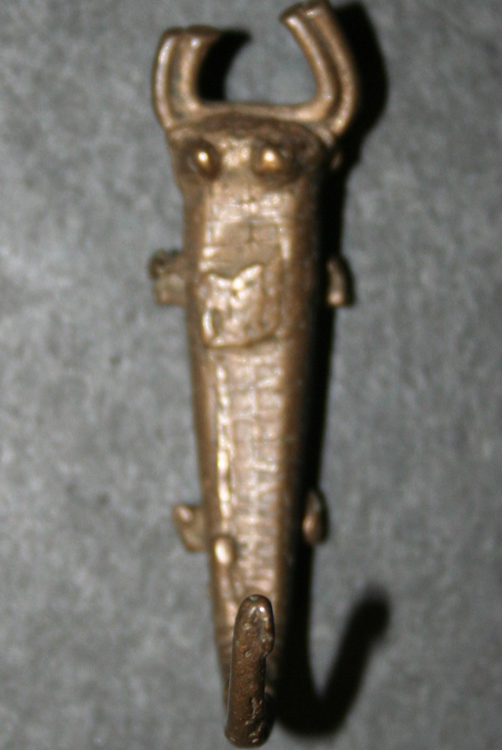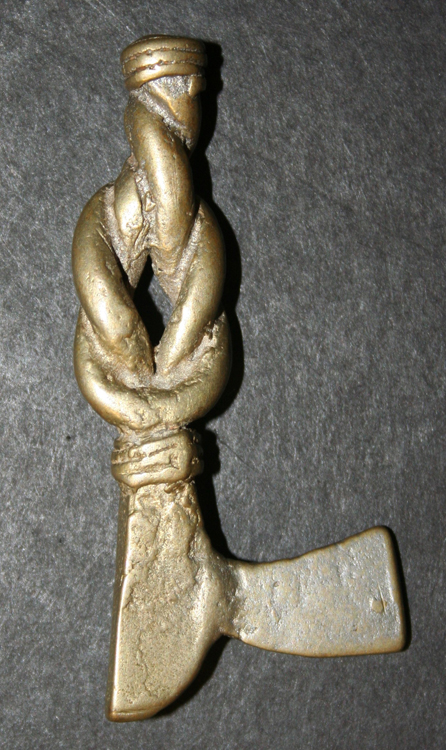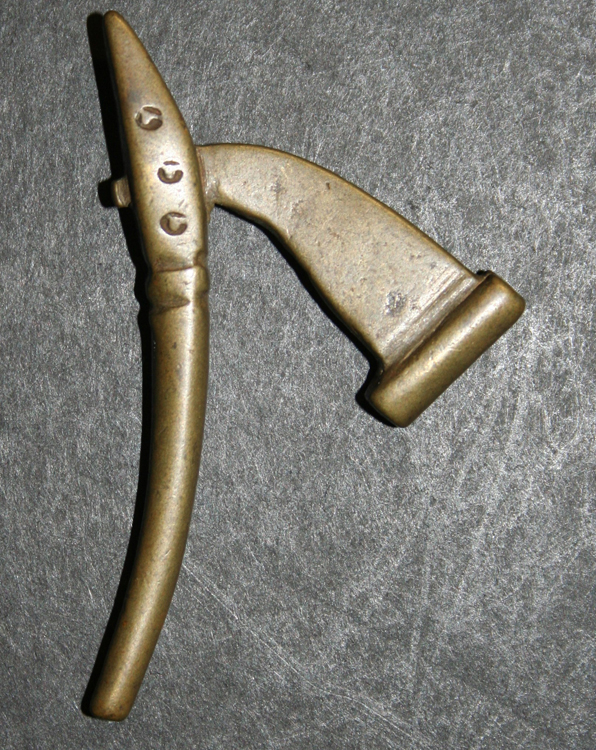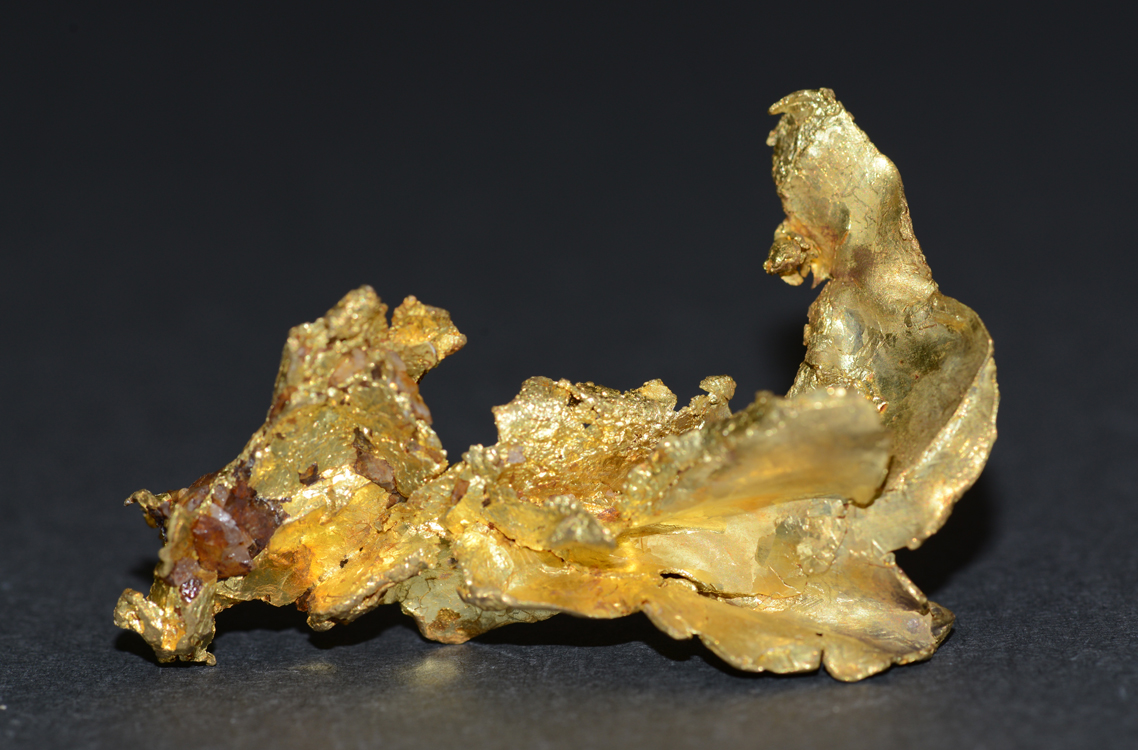
Gold (Au) is the most stable element on earth and has been valued throughout recorded history for jewelry, gold coins, and other art. It does not react to weathering or most acids, explaining why most all the gold ever mined still exists. About 50% of gold is fashioned into jewelry, 40% is invested, and 10% is used in industry. Its price has fluctuated greatly since 1971 when it was no longer fixed by law at $35 per ounce. Shown here are samples of native gold, pyrite (a mineral commonly called “fool’s gold”), artifacts plated with gold, and gold weights that are made of brass to use in the weighing of gold dust.
Unknown Artist
Ashanti/Asante/Akan, Ghana, Africa
Gold Weights, various dates
Brass, sizes ranging from 5/8 to 3 1/2 inches in length
Gift of Mr. Harold Kaye
Gold’s importance as a commodity gave rise to Ghana’s old colonial name, the Gold Coast. Most merchants and high-ranking individuals used their personal weighing equipment to ensure a fair transaction, owning full sets of weights and related equipment. Gold weights most often were cast in brass or bronze, but they also sometimes were fashioned from other materials. The Akan system for weighing gold dust was based on North African, Dutch, Portuguese, and local measures, resulting in precisely calibrated weights. Gold was not only a means of wealth and a way of displaying status, but it was also a spiritual substance. The glittering metal was considered the earthly embodiment of the sun (kra), and thus the force of life itself.
Unknown Artist
Ashanti/Asante/Akan, Ghana, Africa
Gold Weights, various dates
Brass, sizes ranging from 5/8 to 3 1/2 inches in length
Gift of Mr. Harold Kaye
Unknown Artist
Ashanti/Asante/Akan, Ghana, Africa
Gold Weights, various dates
Brass, sizes ranging from 5/8 to 3 1/2 inches in length
Gift of Mr. Harold Kaye
Unknown Artist
Ashanti/Asante/Akan, Ghana, Africa
Gold Weights, various dates
Brass, sizes ranging from 5/8 to 3 1/2 inches in length
Gift of Mr. Harold Kaye
Unknown Artist
Ashanti/Asante/Akan, Ghana, Africa
Gold Weights, various dates
Brass, sizes ranging from 5/8 to 3 1/2 inches in length
Gift of Mr. Harold Kaye
Unknown Artist
Ashanti/Asante/Akan, Ghana, Africa
Gold Weights, various dates
Brass, sizes ranging from 5/8 to 3 1/2 inches in length
Gift of Mr. Harold Kaye
Gold in vial
Sapphire Mine, Yogo Gulch, Judith Basin County, Montana
2 inches (vial)
Estate of Irénée du Pont
Gold
California
1 1/2 x 2 1/4 x 1/2 inch
Estate of Irénée du Pont
Unknown Artist
Ashanti/Asante/Akan, Ghana, Africa
Gold Dust Measuring Spoon, early 20th century
Brass, 5 5/8 x 1 1/2 inches
Gift of Mr. Harold Kaye
Akan gold production probably began in the second half of the fifteenth century. Until 1901, gold circulated in powdered form, sika future, as the currency of the Asante Empire and many of its neighbors. In transactions and commercial exchanges in the market, gold dust was ladled onto a scale using brass spoons and weighed with cast-brass weights of varying sizes. This particular spoon, however, appears to be composed primarily of copper. In addition to the uniqueness of the metal from which it is made, ornate whorls and incised decoration further indicate the importance of the spoon’s owner.

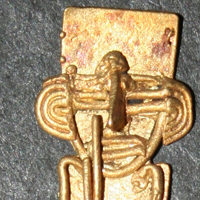
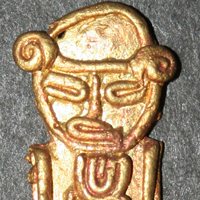
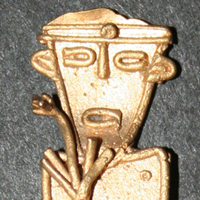
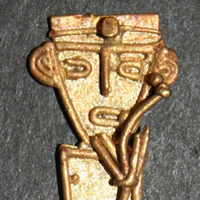
Unknown Artist(s)
Colombia, South America
Tumbaga Objects, date unknown
Gold/copper alloy, various sizes ranging from 1 inch to 4 inches in length
Gift of Lammot duPont
Tumbaga is the name given by Spanish Conquistadors for an alloy of gold and copper, which was widely used by the pre-Columbian cultures of South and Central America to make objects such as the examples seen here. The wide-ranging use of this alloy was quite versatile, and it was manipulated in many ways such as lost wax casting, raising, and soldering. Because the proportions of the alloy’s composite metals are inconsistent, and objects are sometimes gilded or washed in saline solutions, the color varies in hue from reddish gold to bright yellow gold.
Unknown Artist
Padua, Italy
Plaque, Satyrs and Nymph, 17th-19th century
Bronze, gilding, 2 1/4 x 3 3/8 inches
Gift of Mr. Alan Gerdau
A nymph in ancient Greek and Roman folklore is a minor female deity. Different from goddesses, nymphs are personifications of nature, typically associated with a specific place or landform, and usually depicted as beautiful maidens. Satyrs, seen here in Roman form, are depicted as fauns with goat legs and horns. They love to dance with the nymphs with whom they are obsessed and whom they often pursue. Representations of satyrs cavorting with nymphs are common in Western art. The usage of this small plaque is unclear, but similar examples appeared as book cover inlays, commemorative medals, or architectural decoration.
Pyrite
Peru
6 x 8 x 4 inches
Estate of Mrs. David Craven
Pyrite, an iron sulfide, is a very common mineral throughout the world; there are many deposits of pyrite in Peru spread over the entire country. Without documentation, it is impossible to know where this Peruvian specimen was mined. Often called “fool’s gold,” it is easily distinguished from gold by its lighter weight and greater hardness, and unlike gold it cannot be scratched with a knife.
Pyrite
Sparta, Randolph County, Illinois
3 x 3 x 1/4 inches
Pyrite disk-like formations, called pyrite suns or pyrite dollars, are crystalline pyrite. The pyrite grows between layers of shale and is flattened by the weight of the overlying sediments. The Sparta area, where many thousands have been collected, is the most prolific locality.
Gold in quartz
California
1 x 2 1/4 x 3/4 inch nugget
Estate of Irénée du Pont

